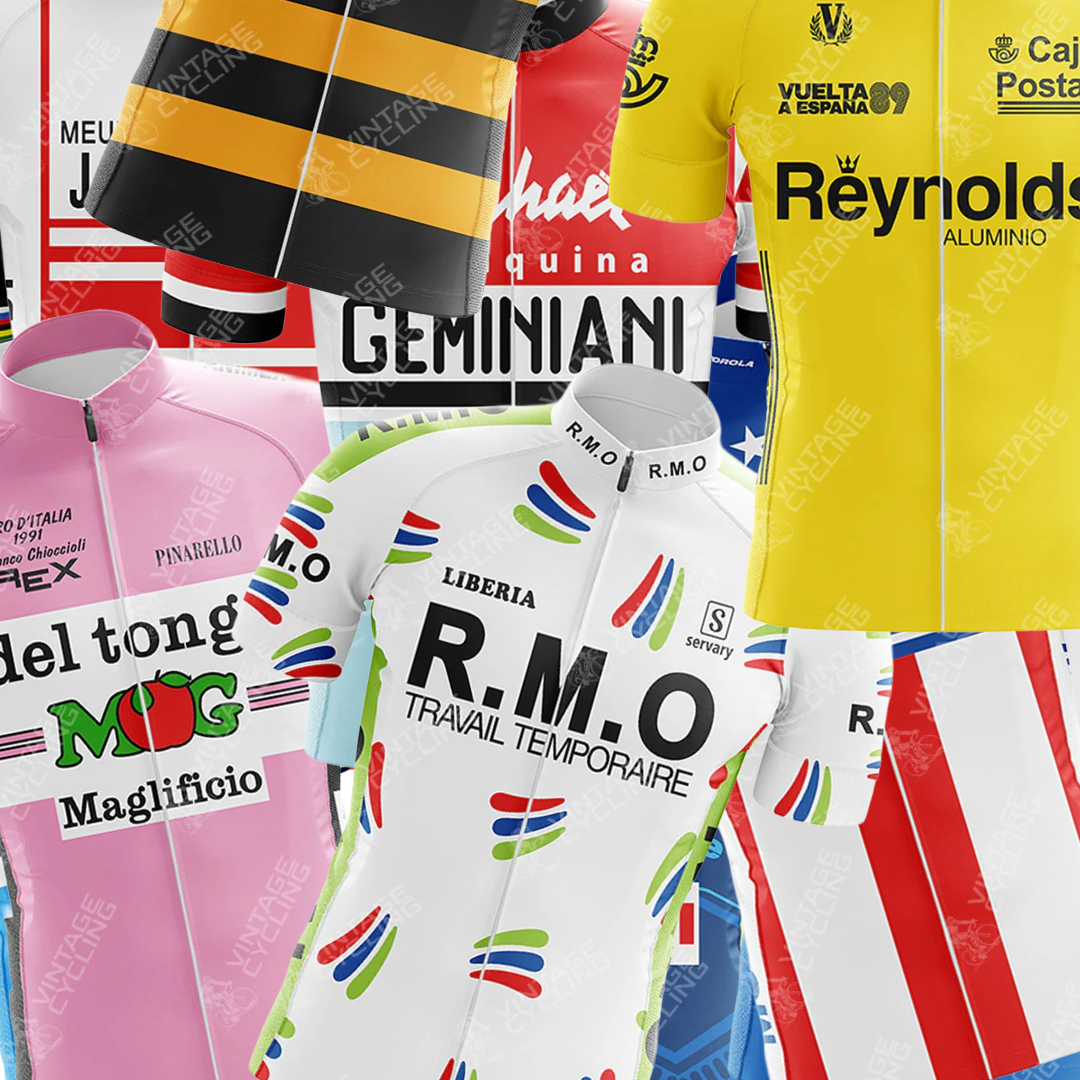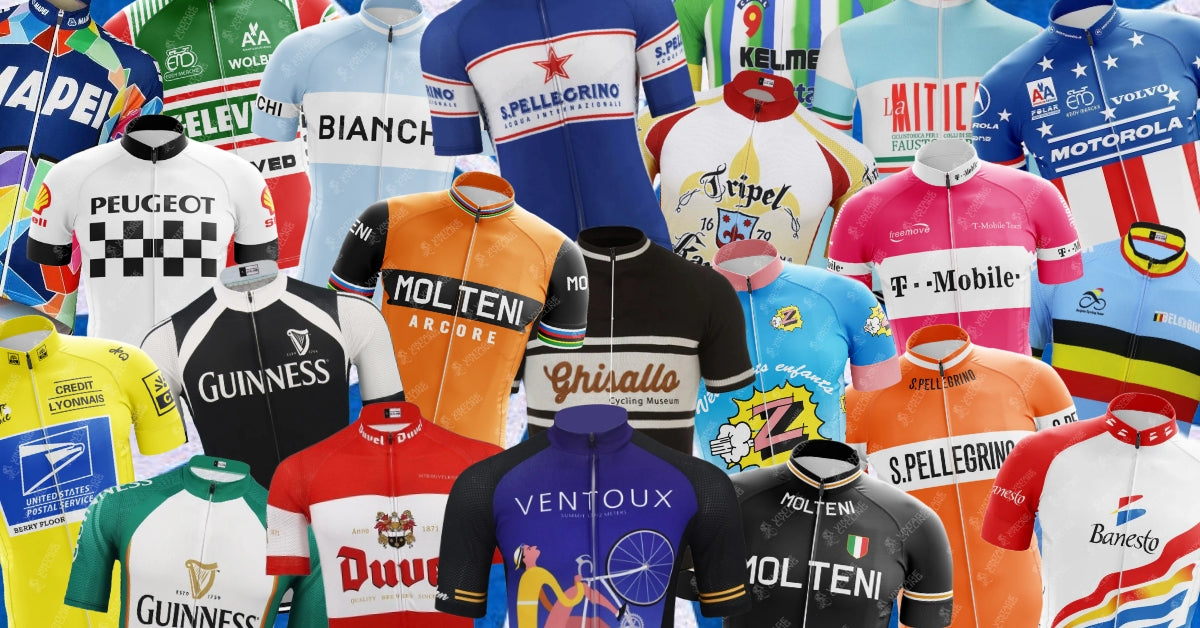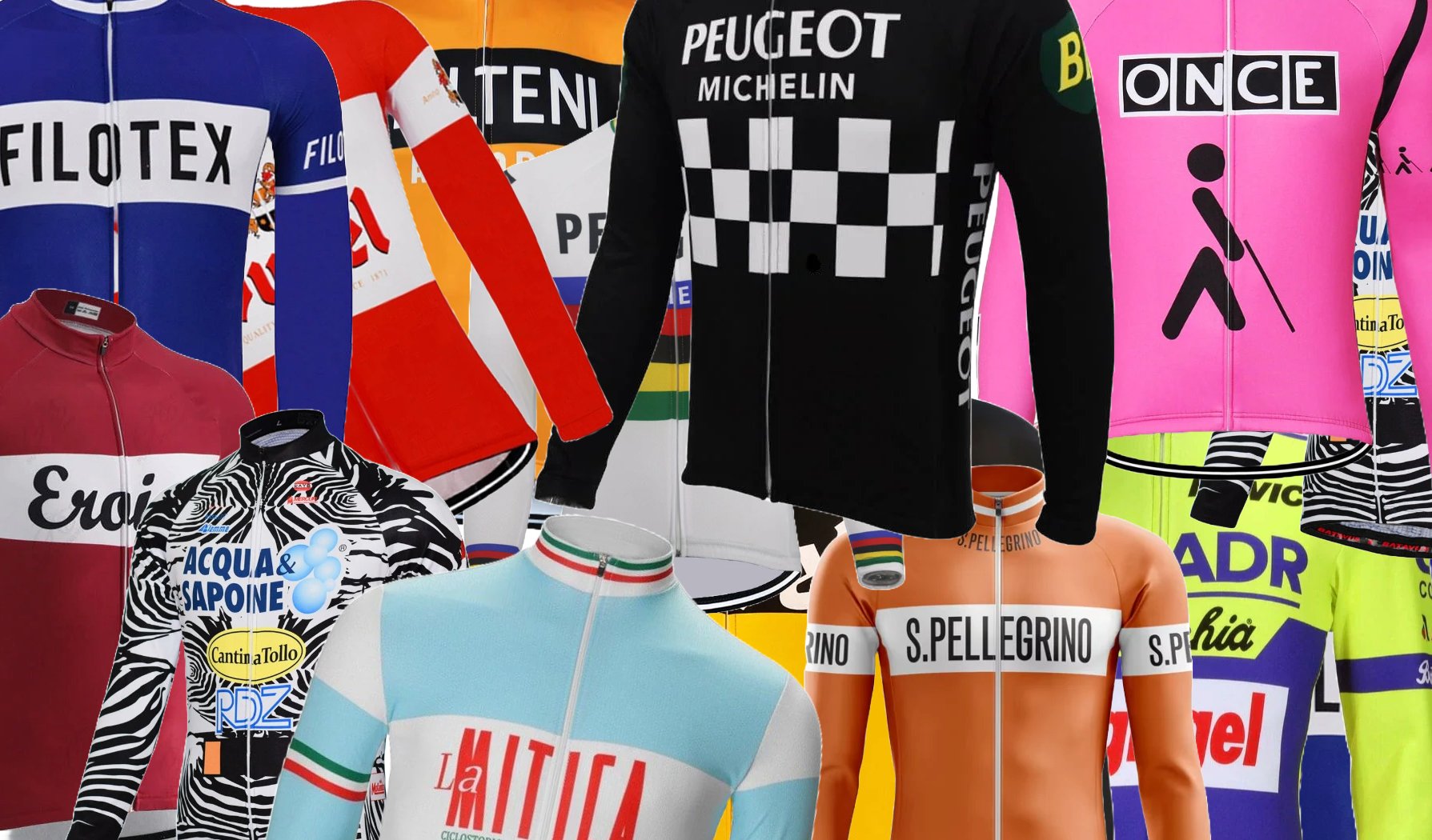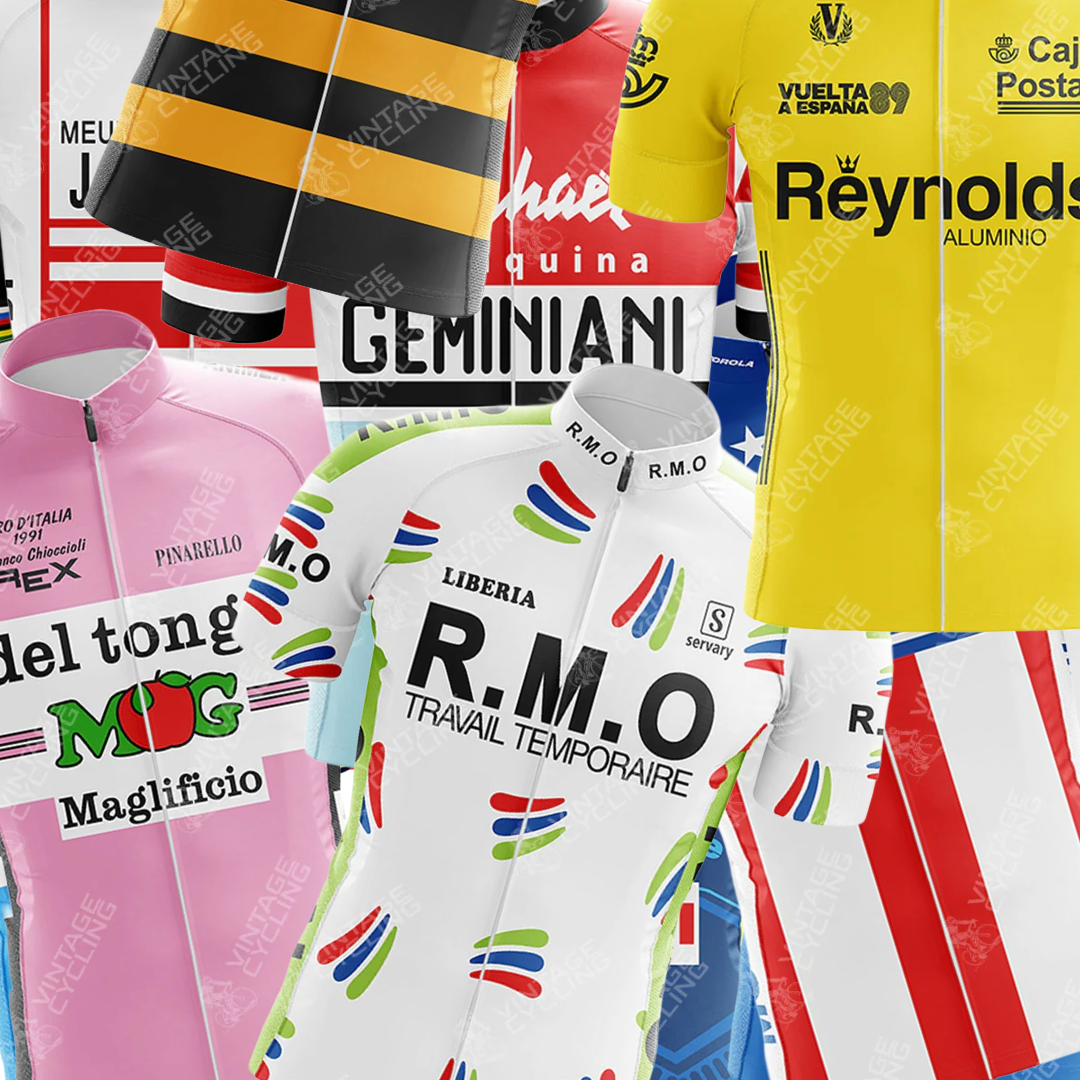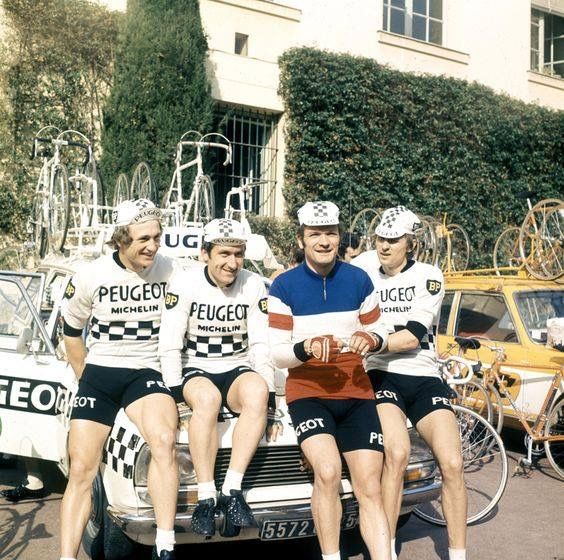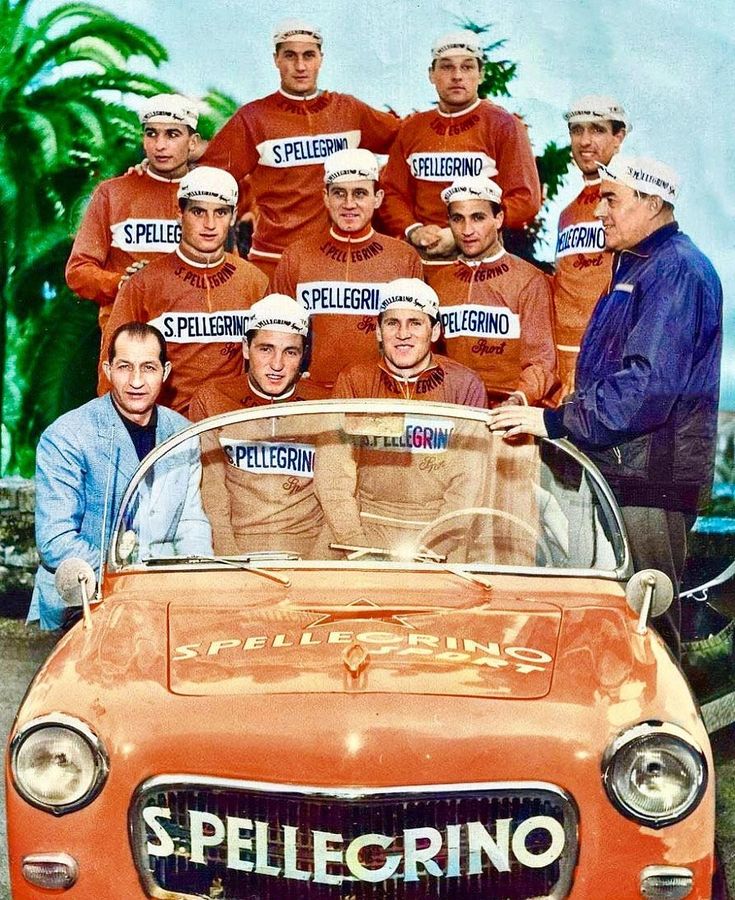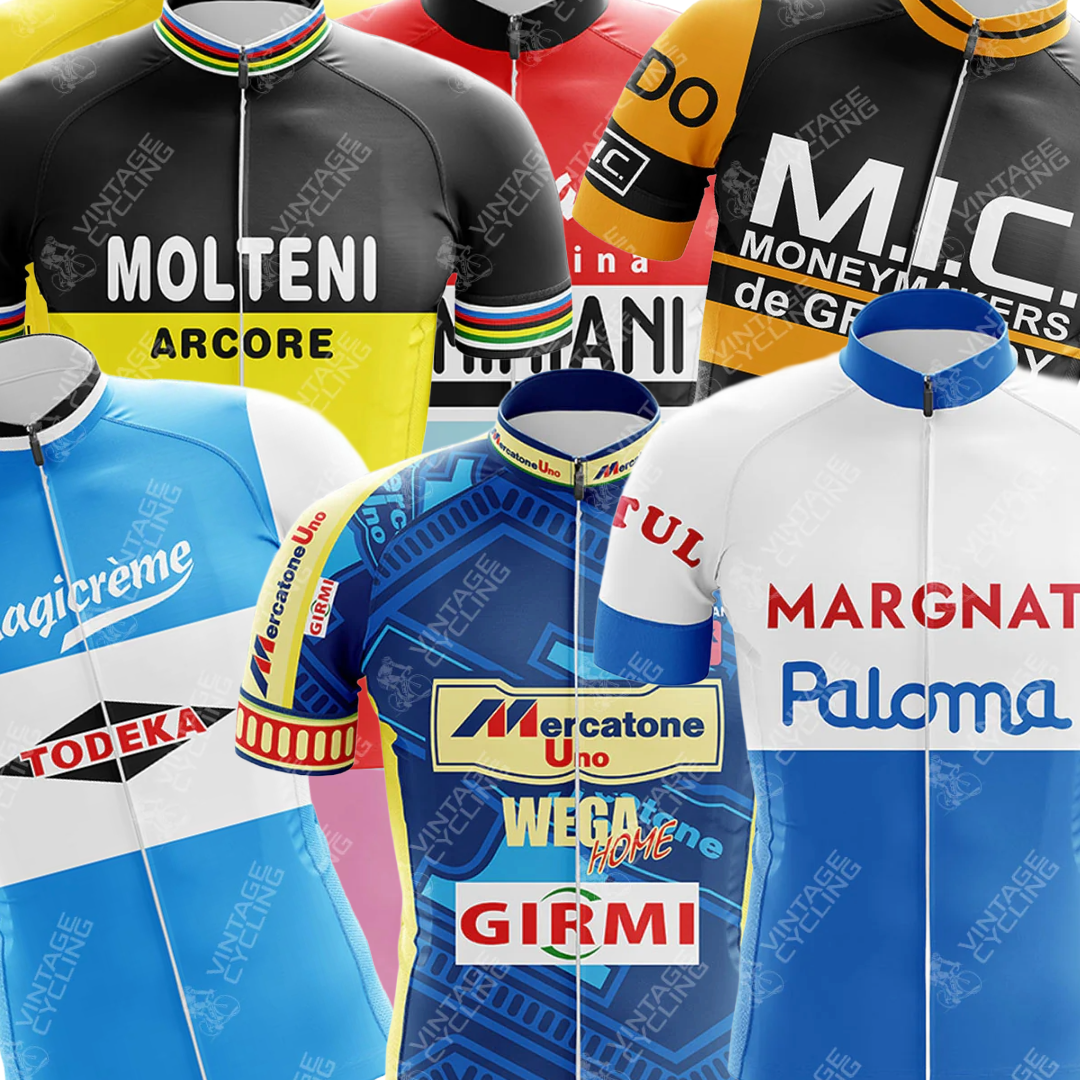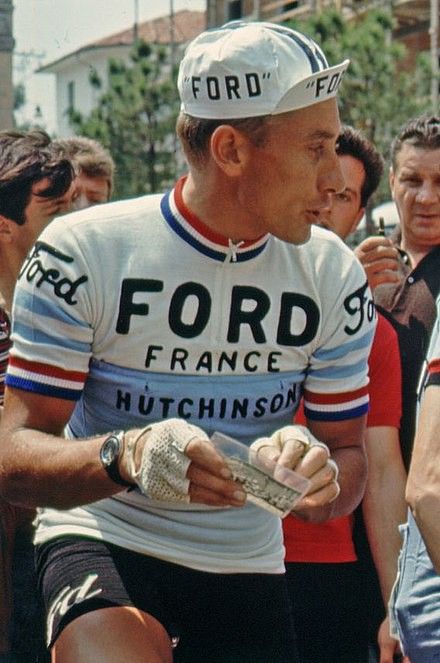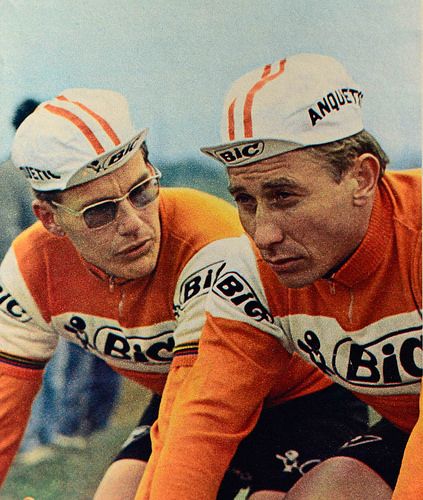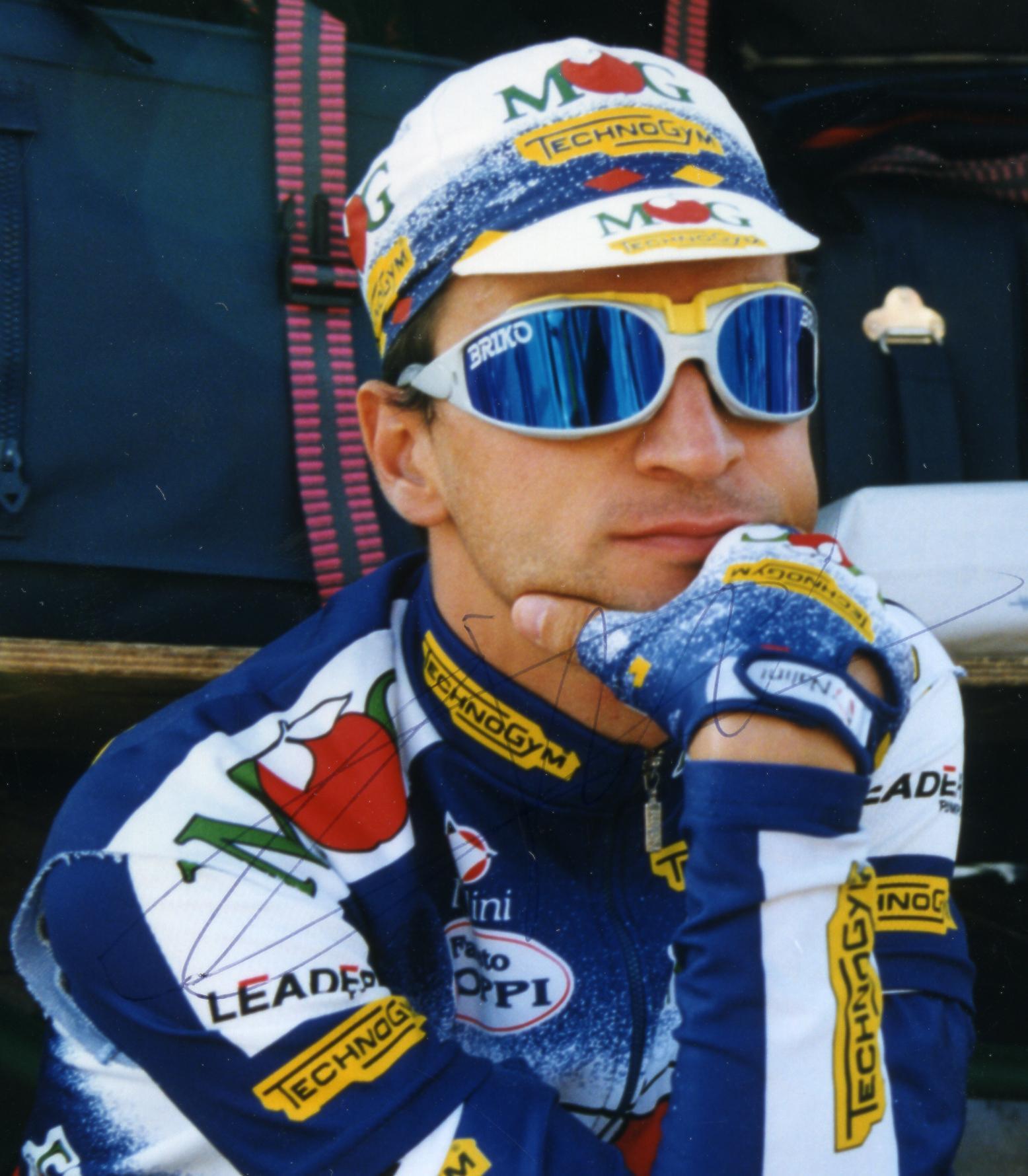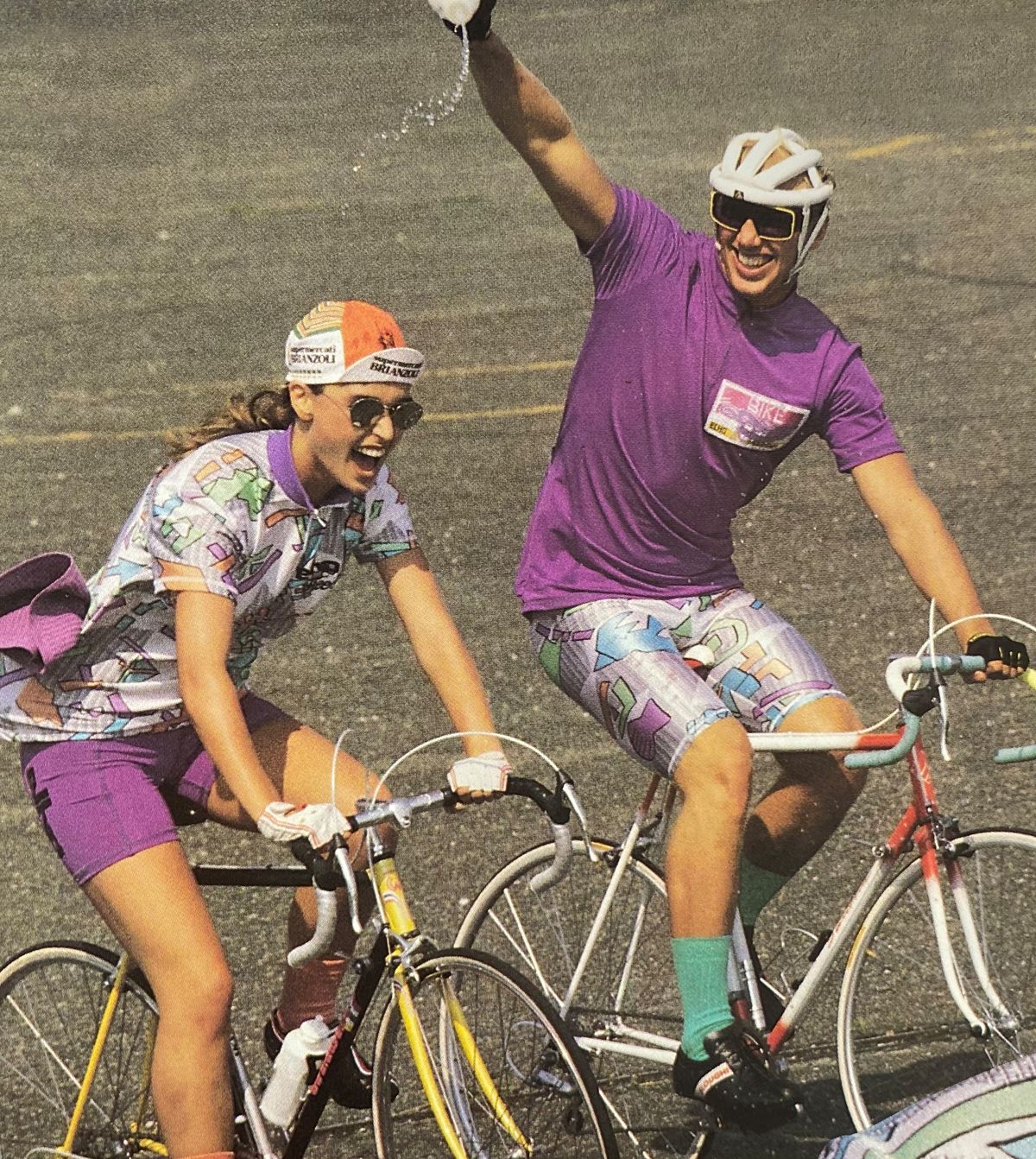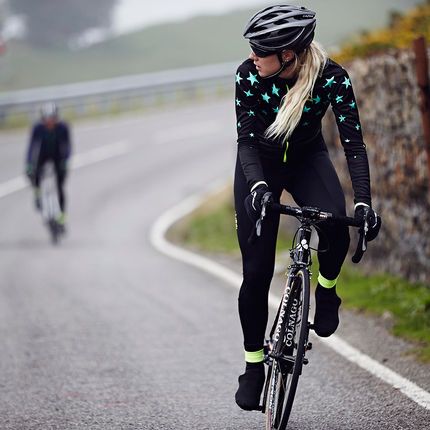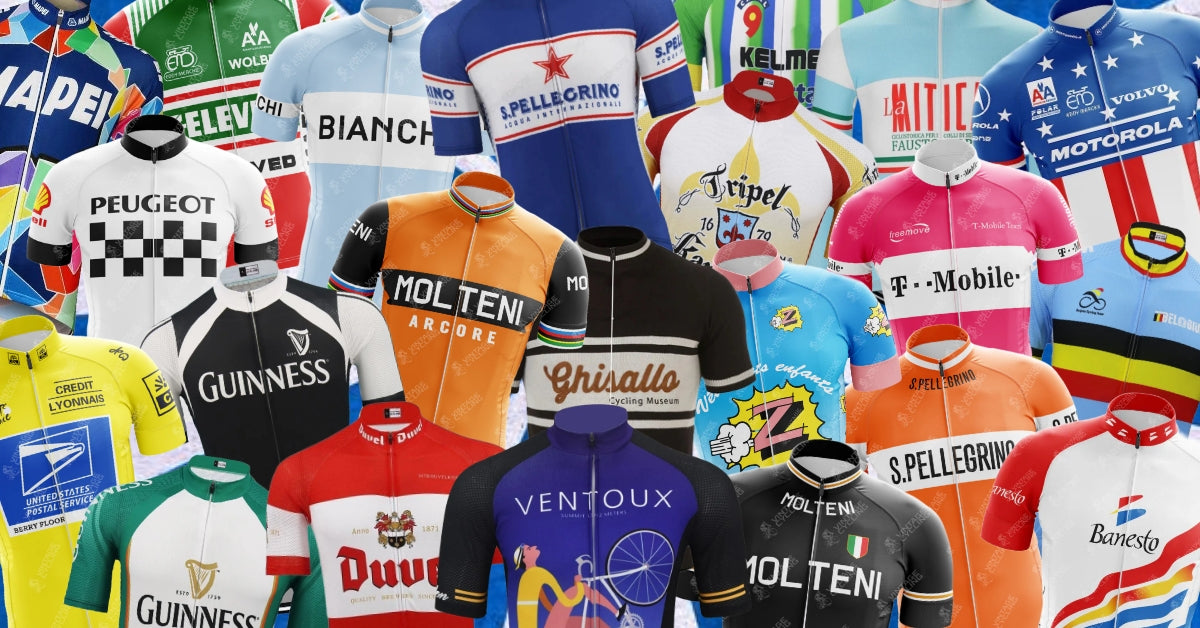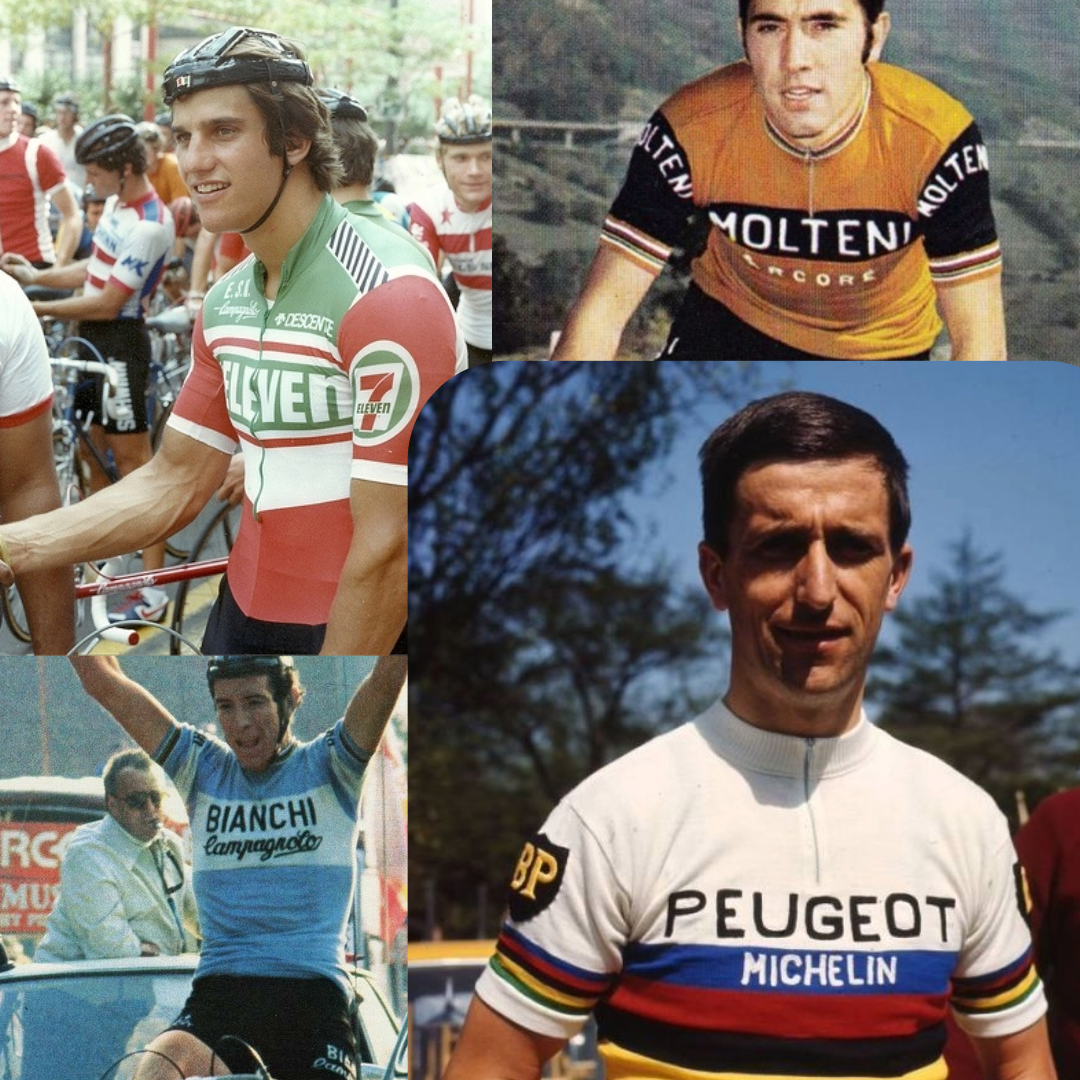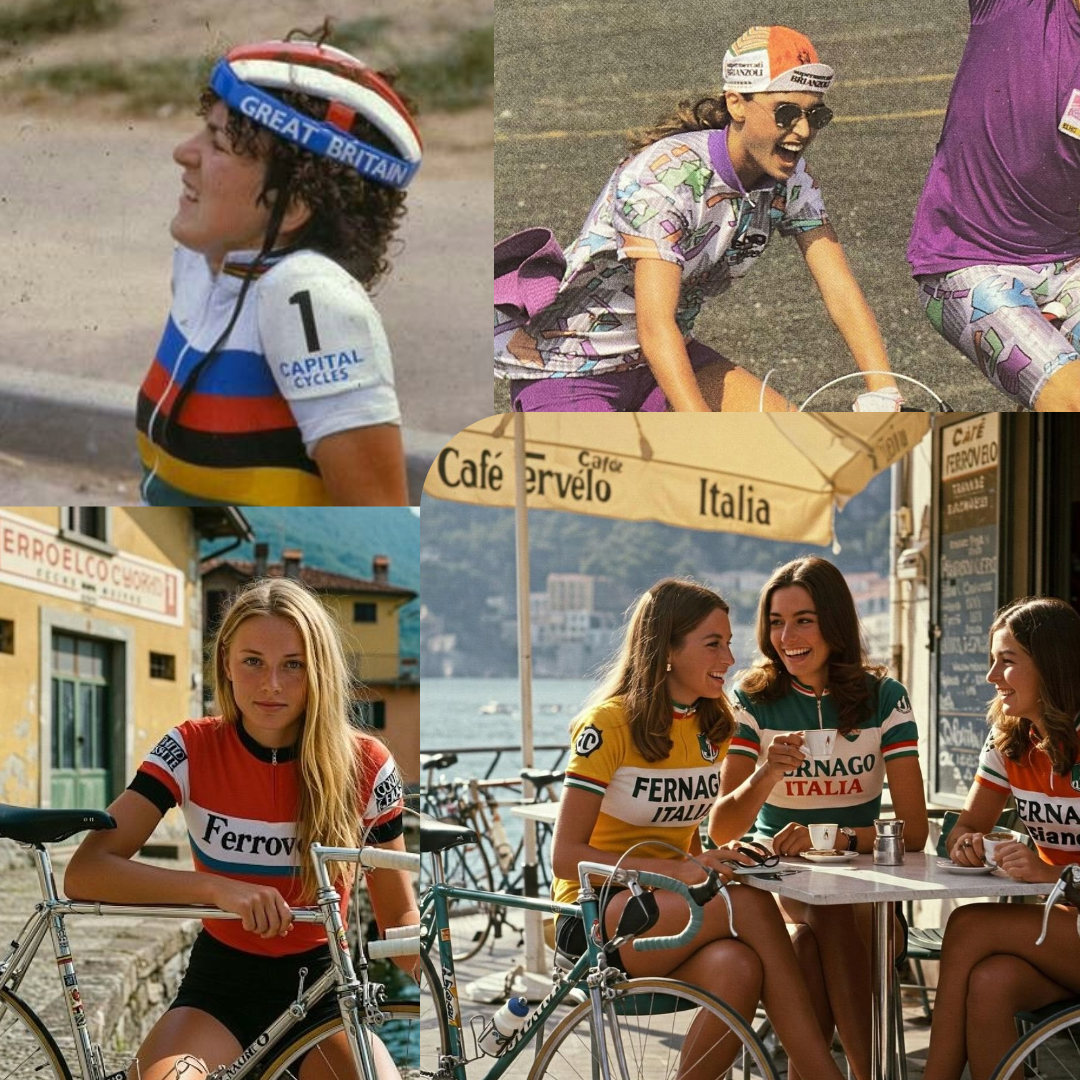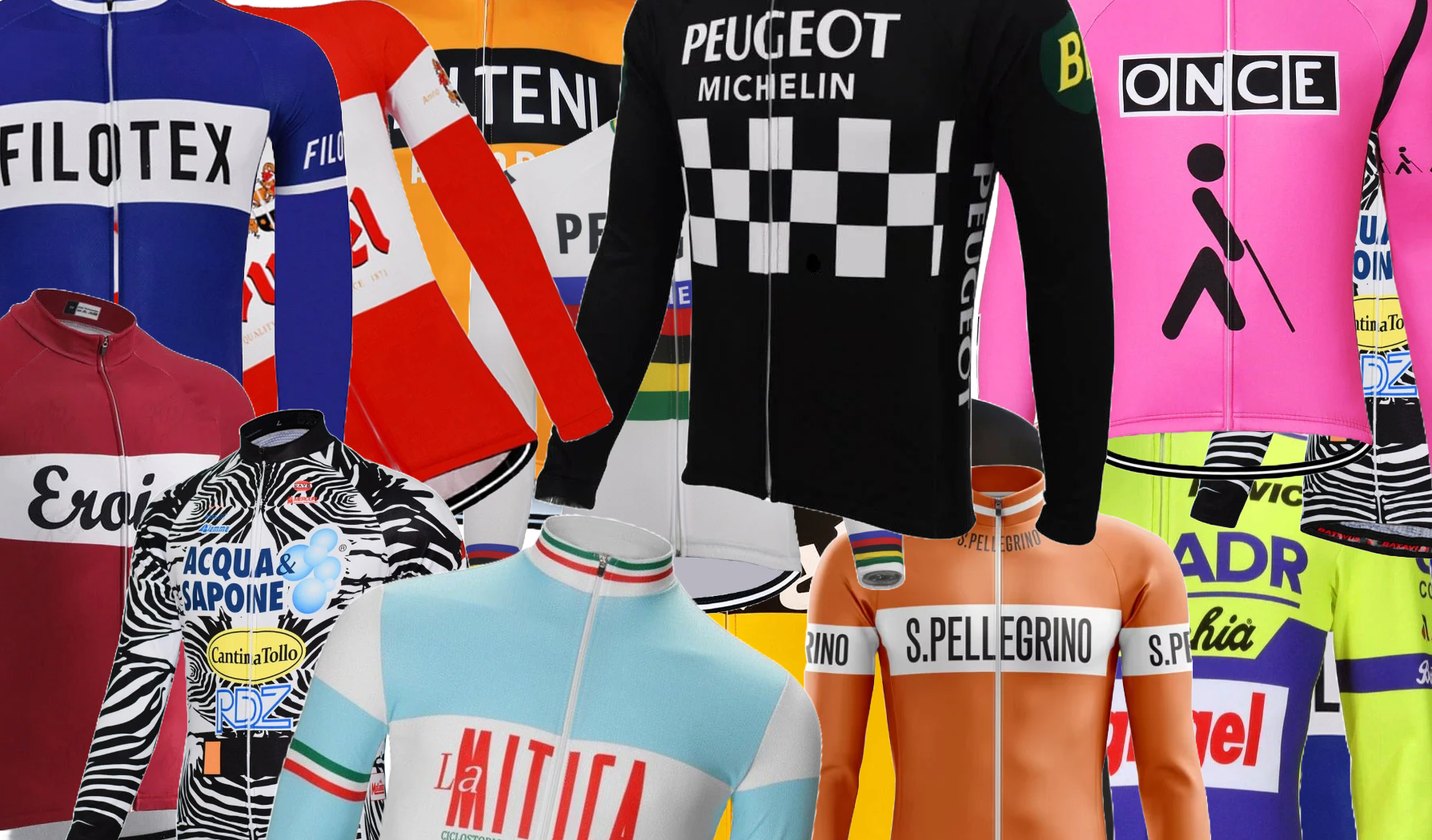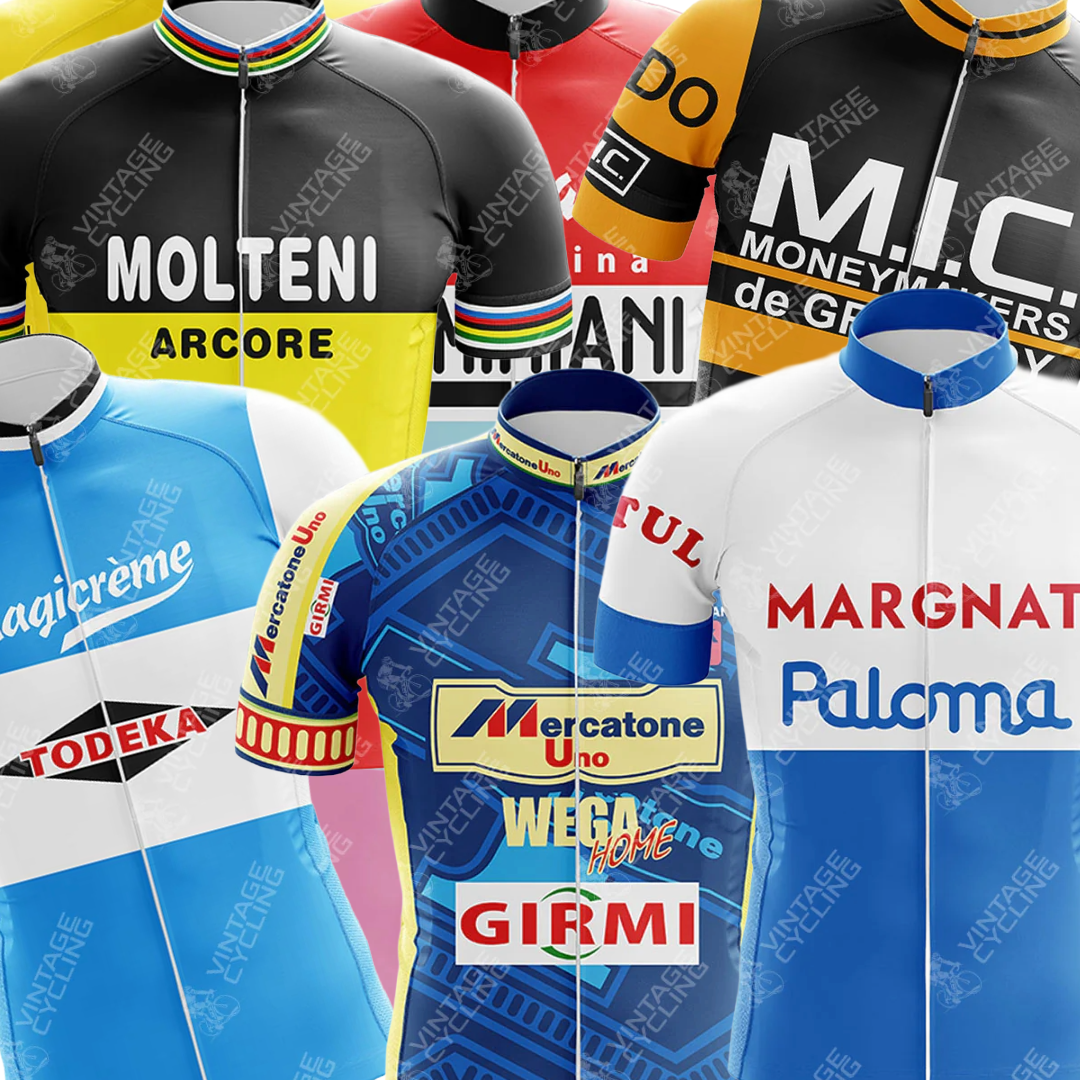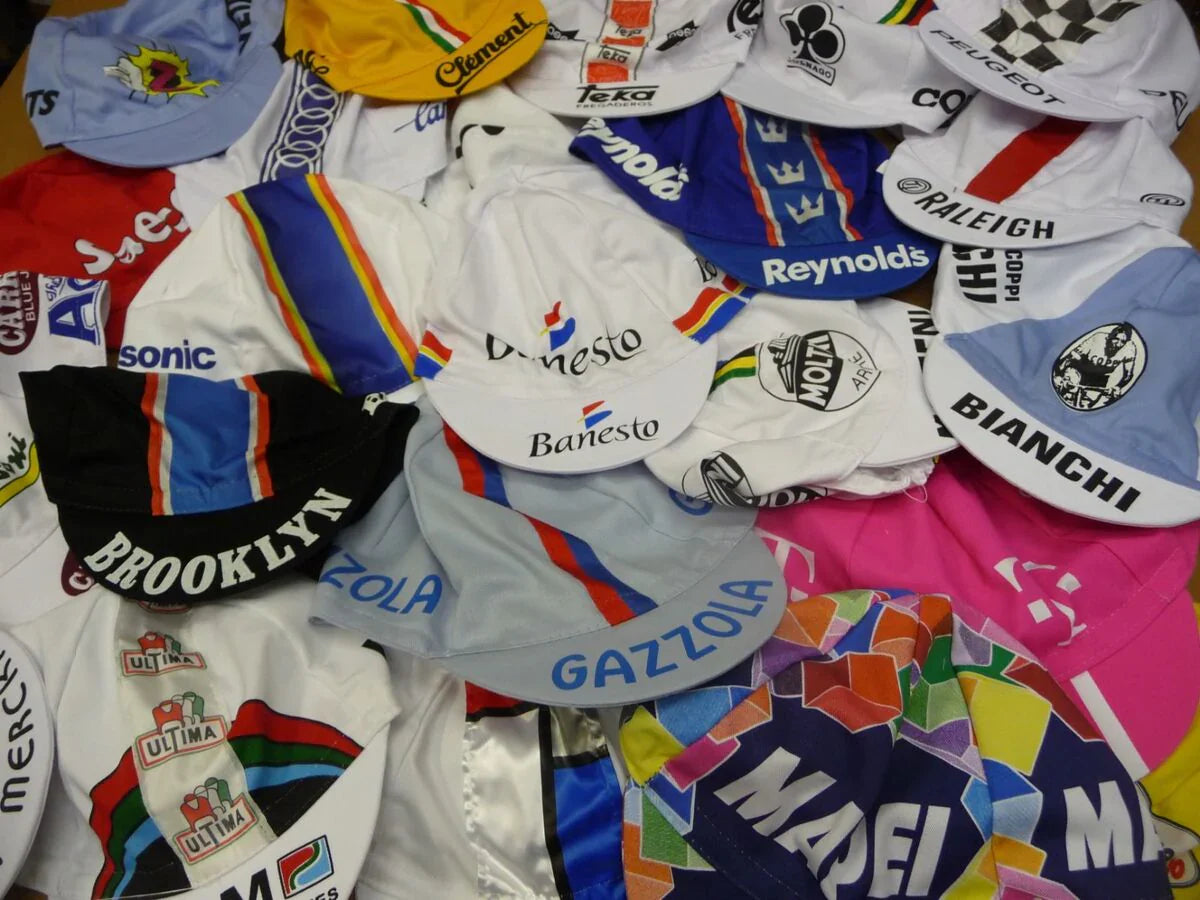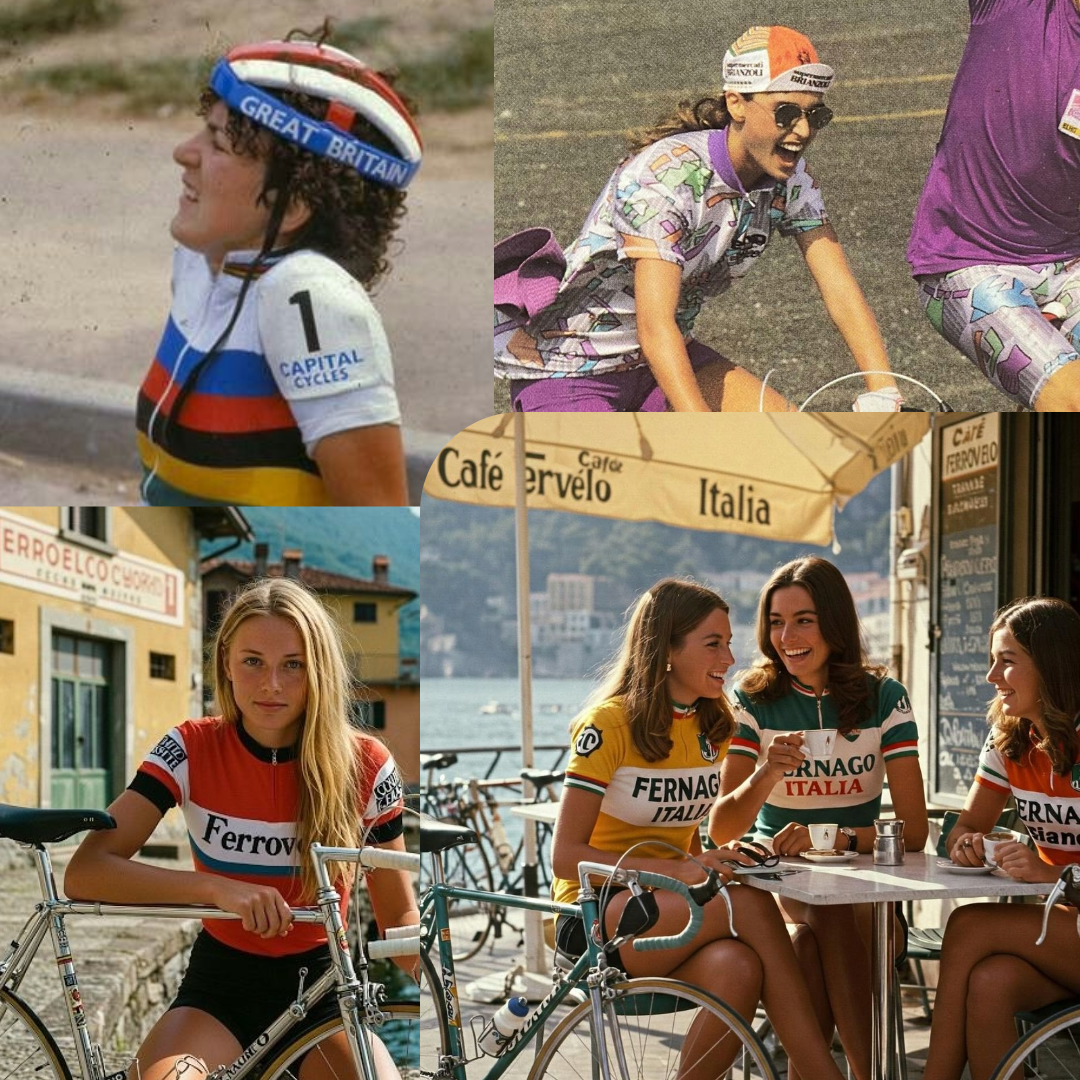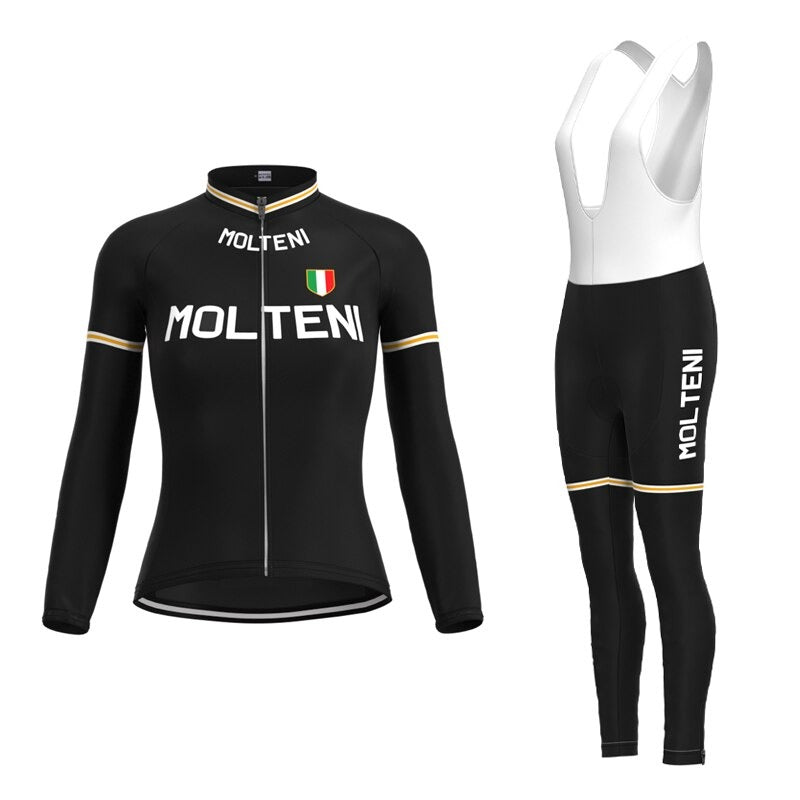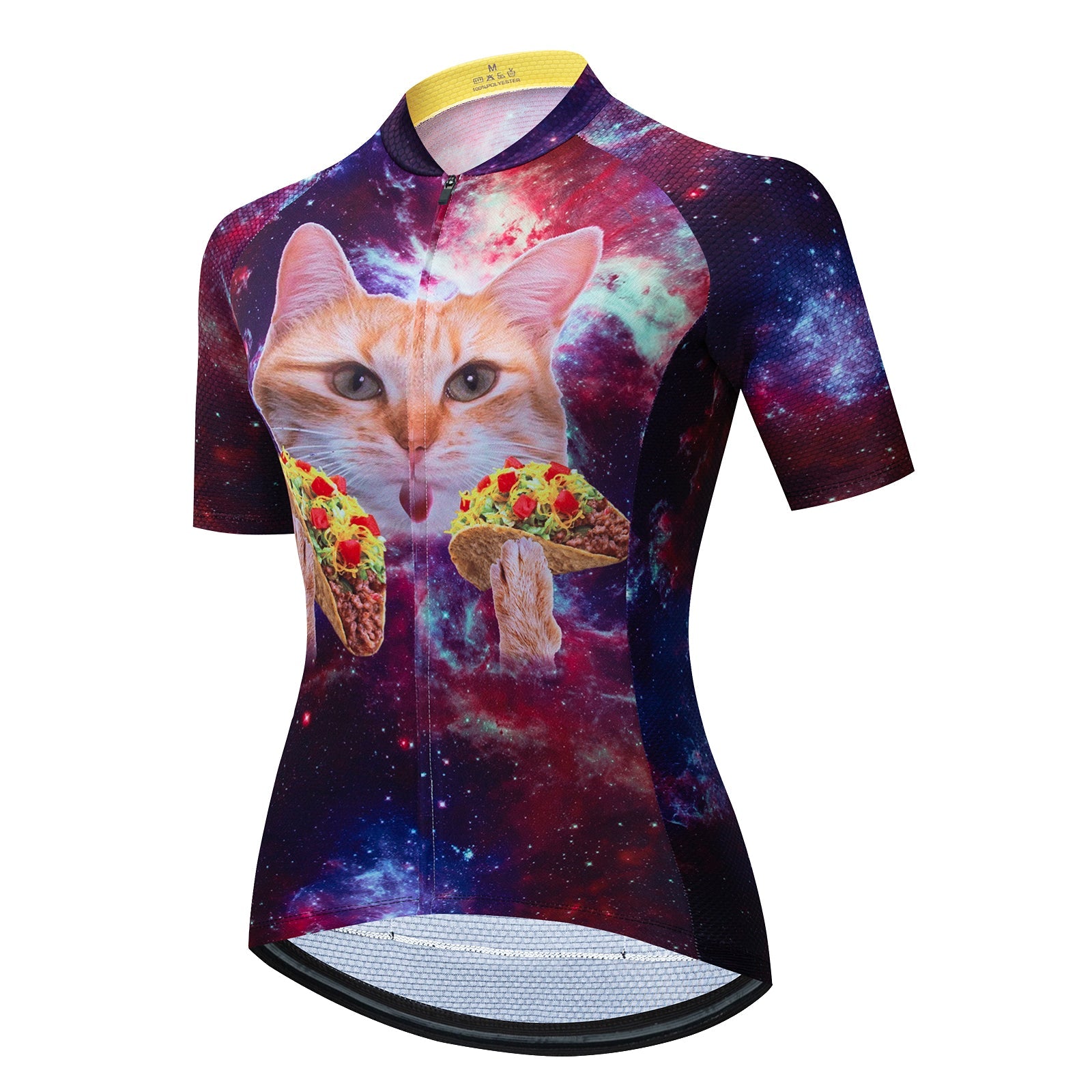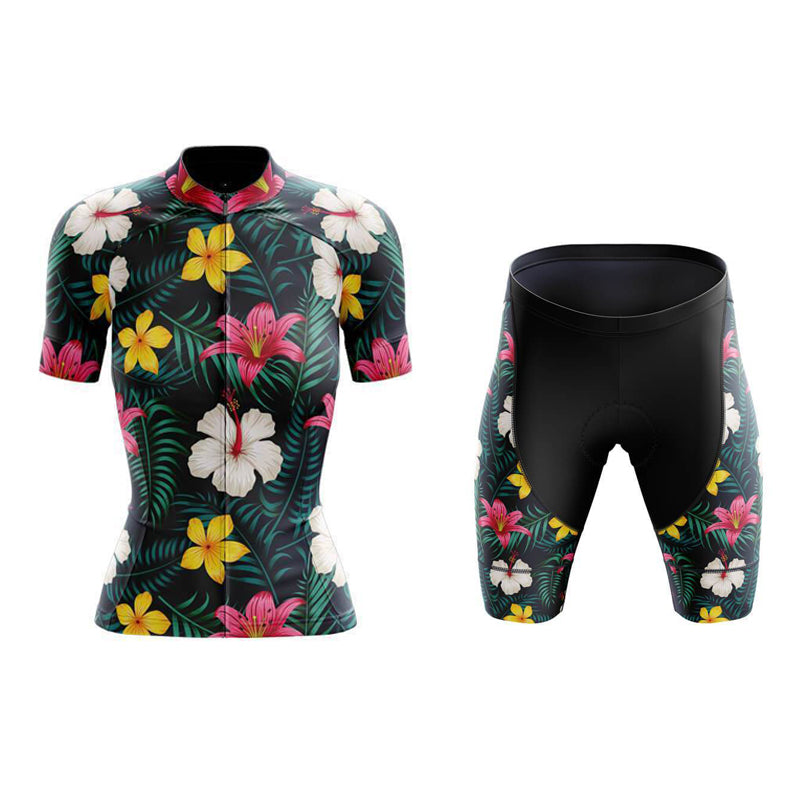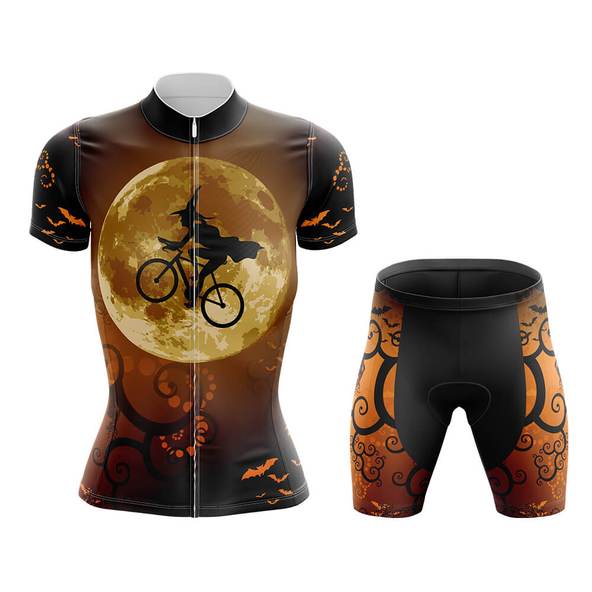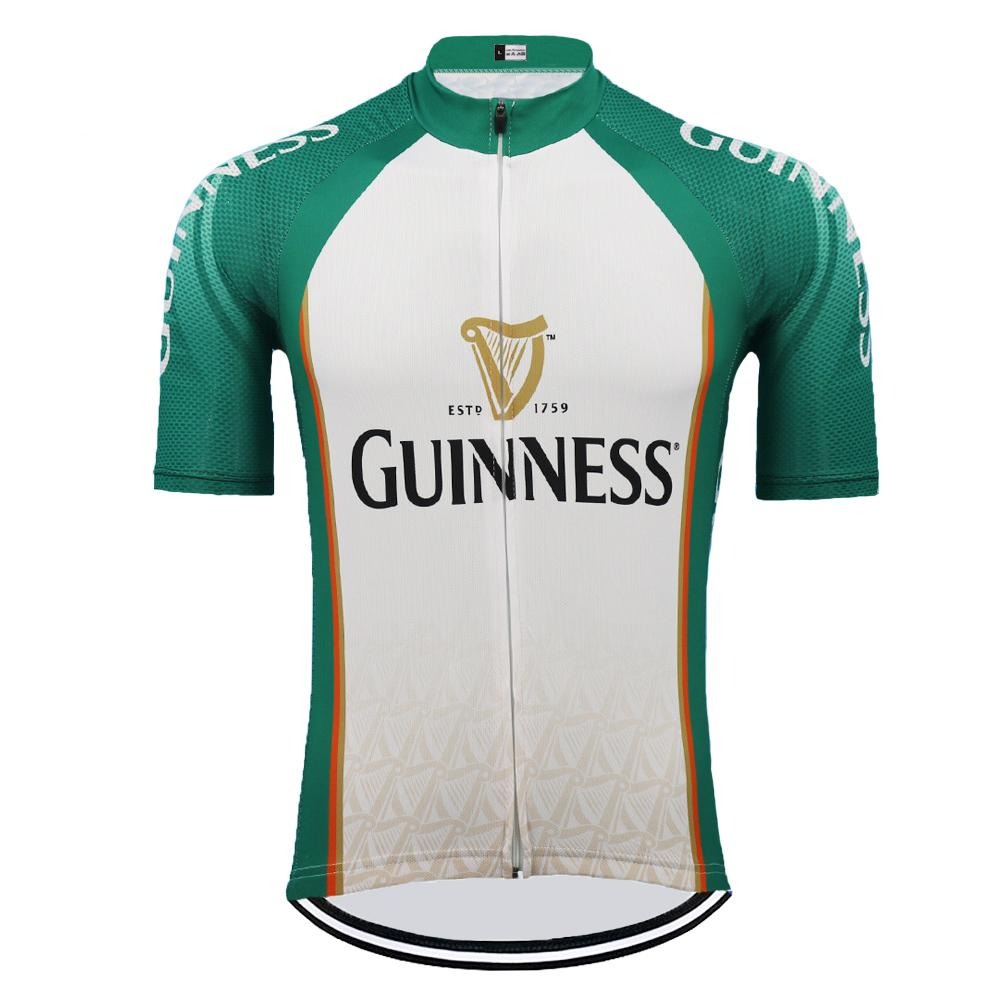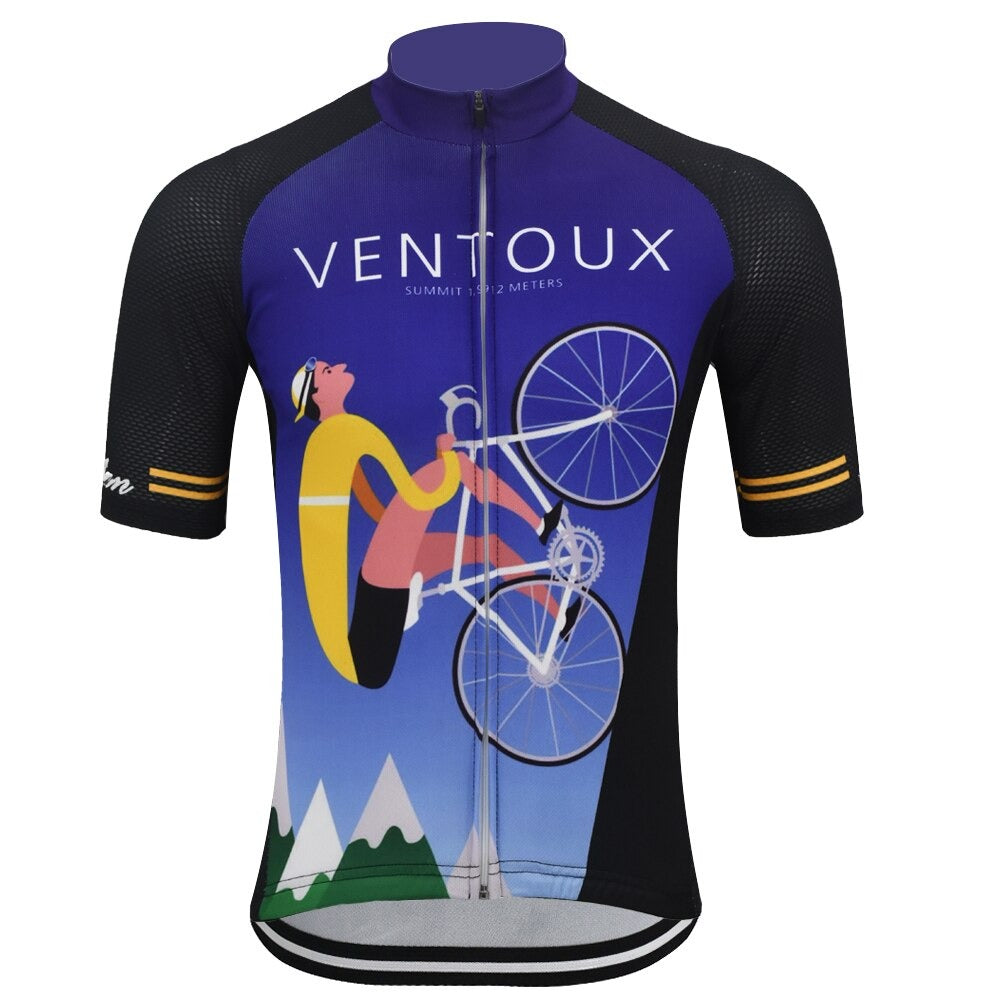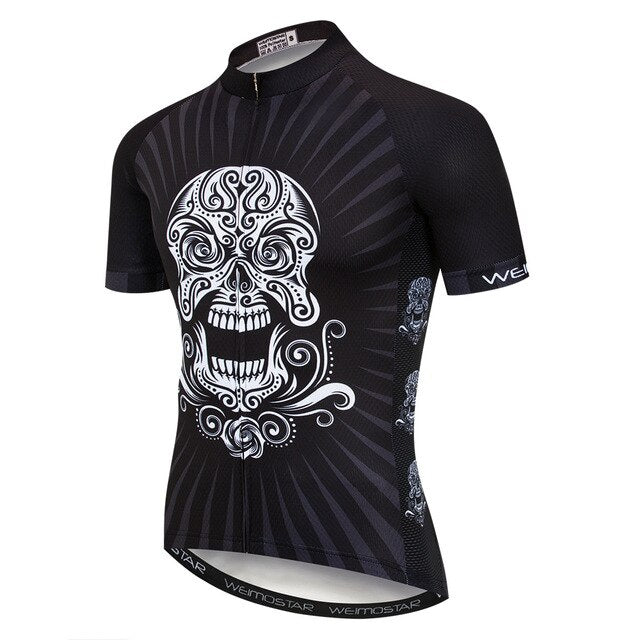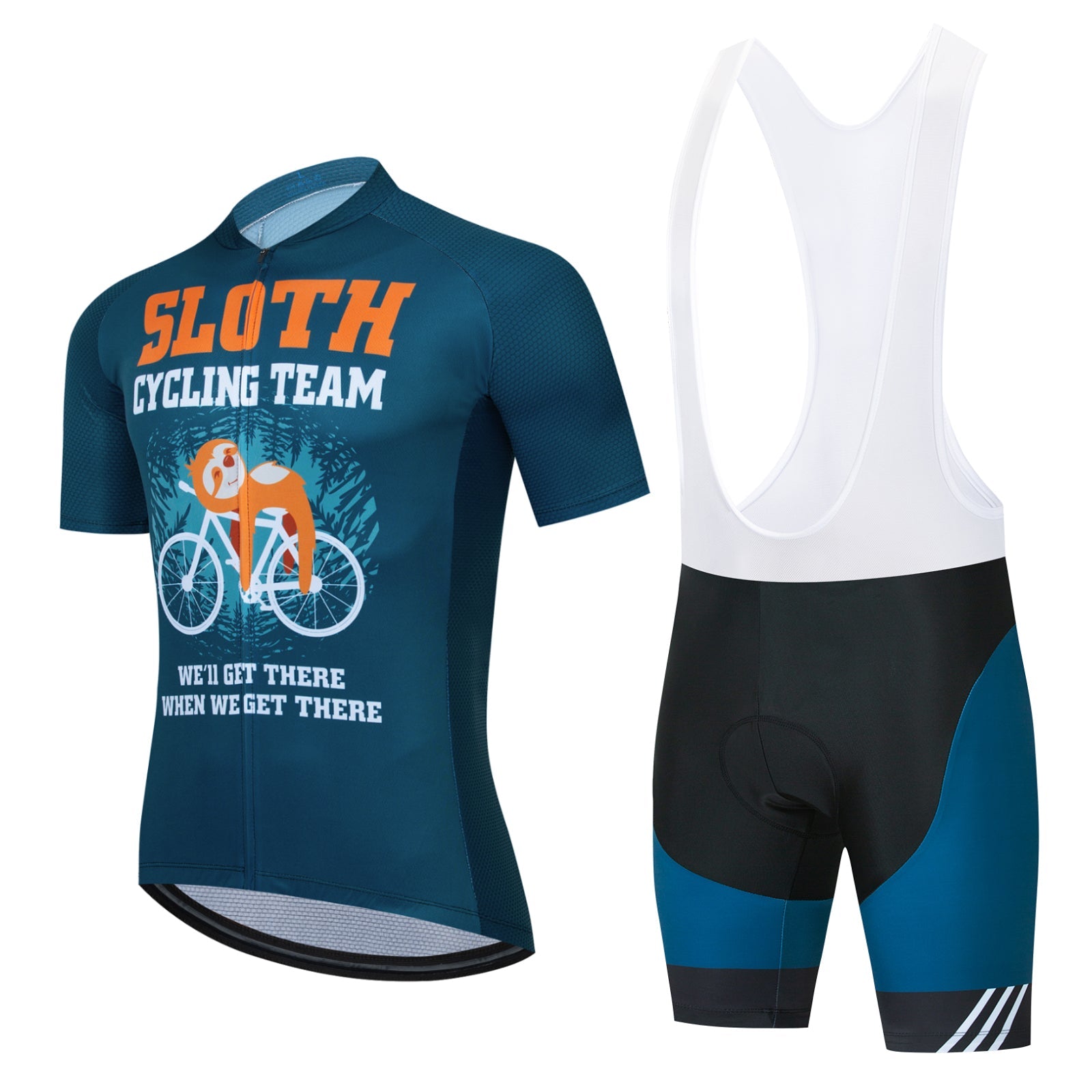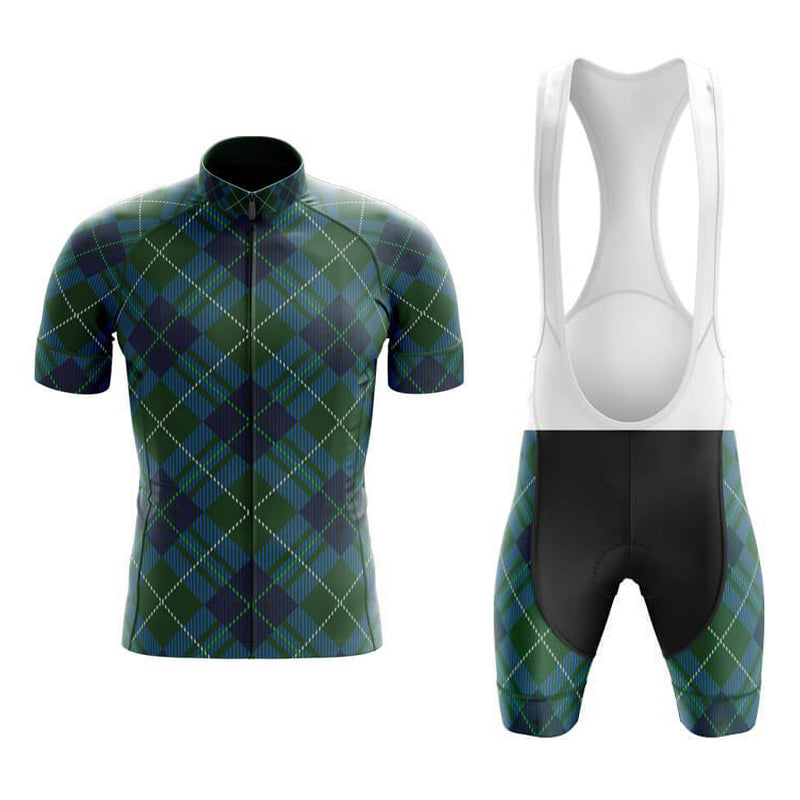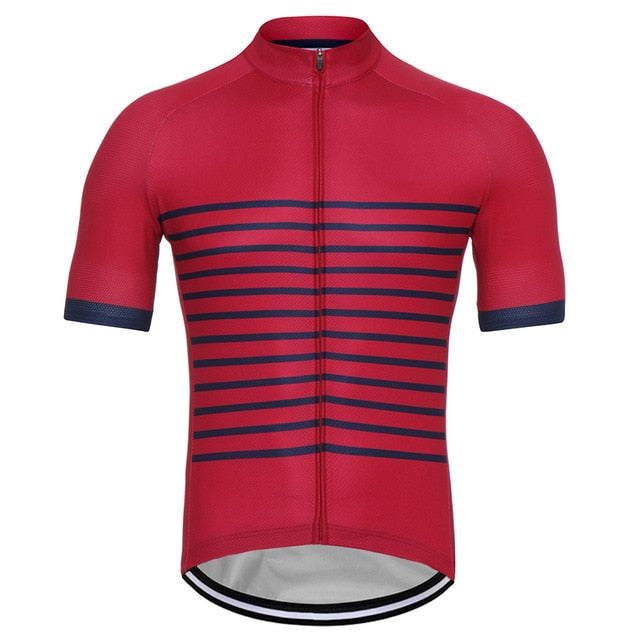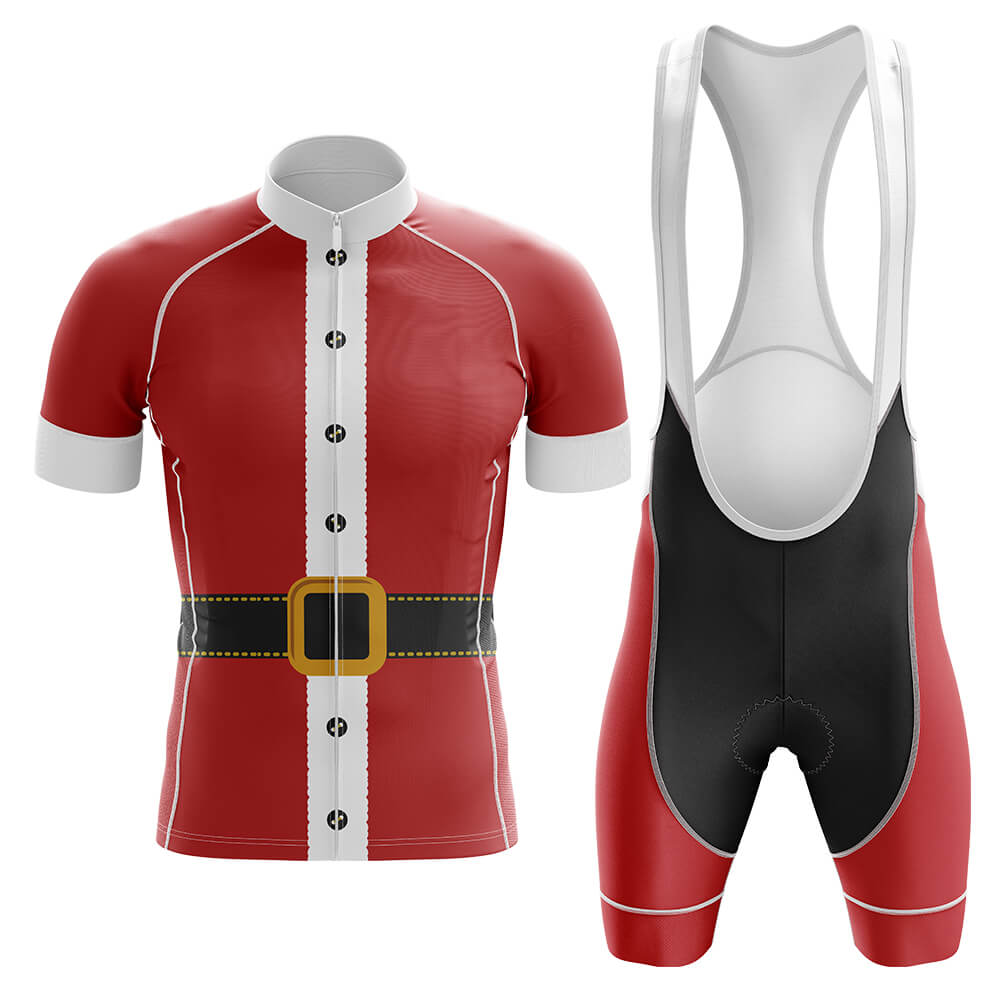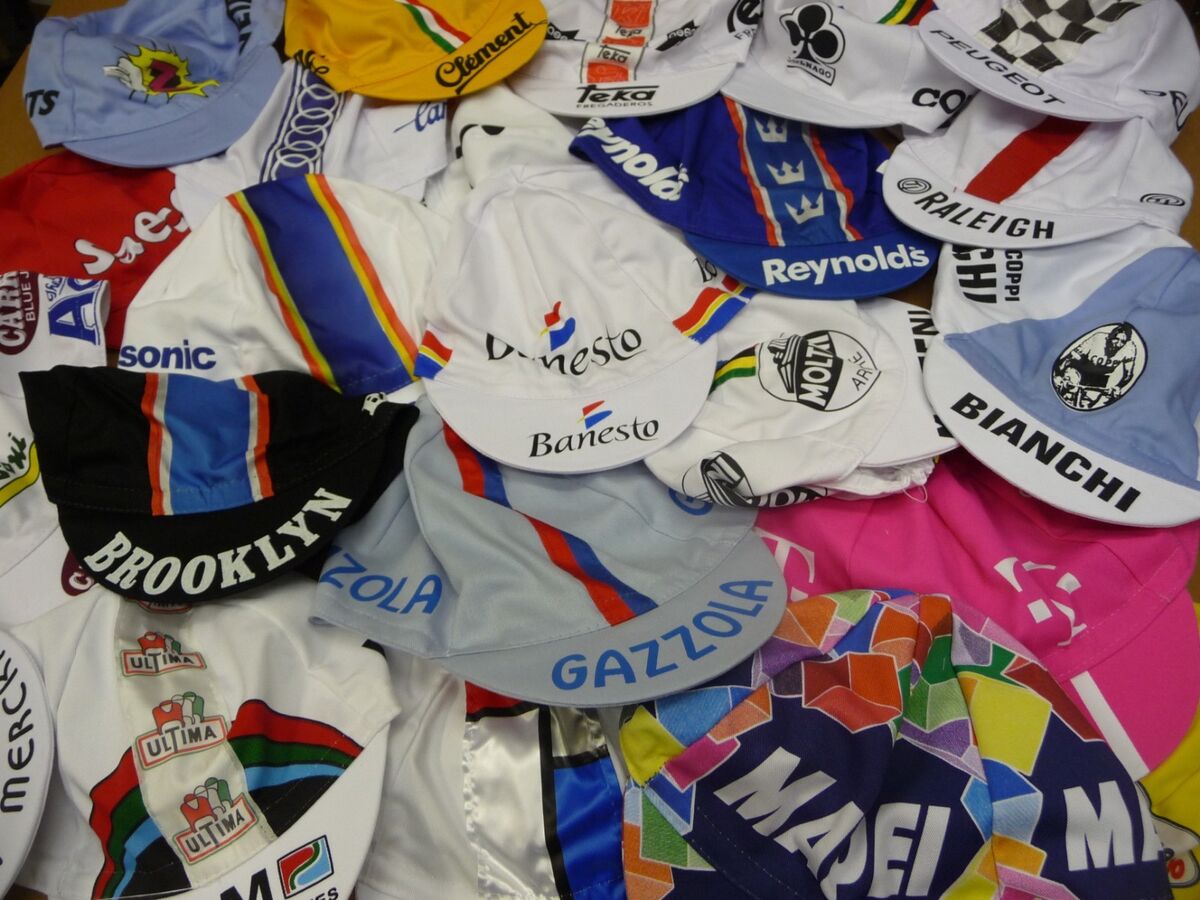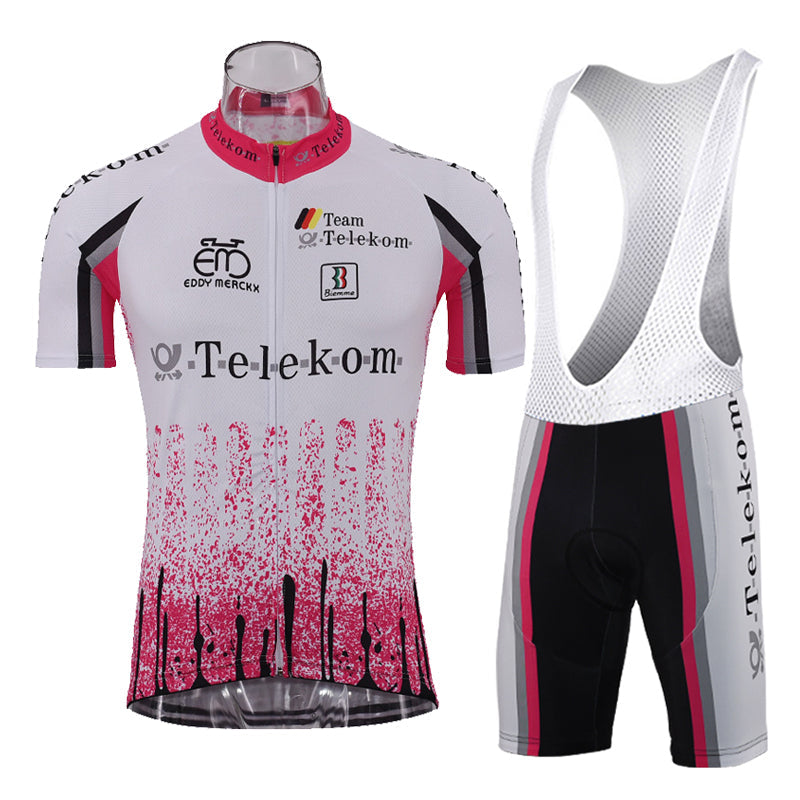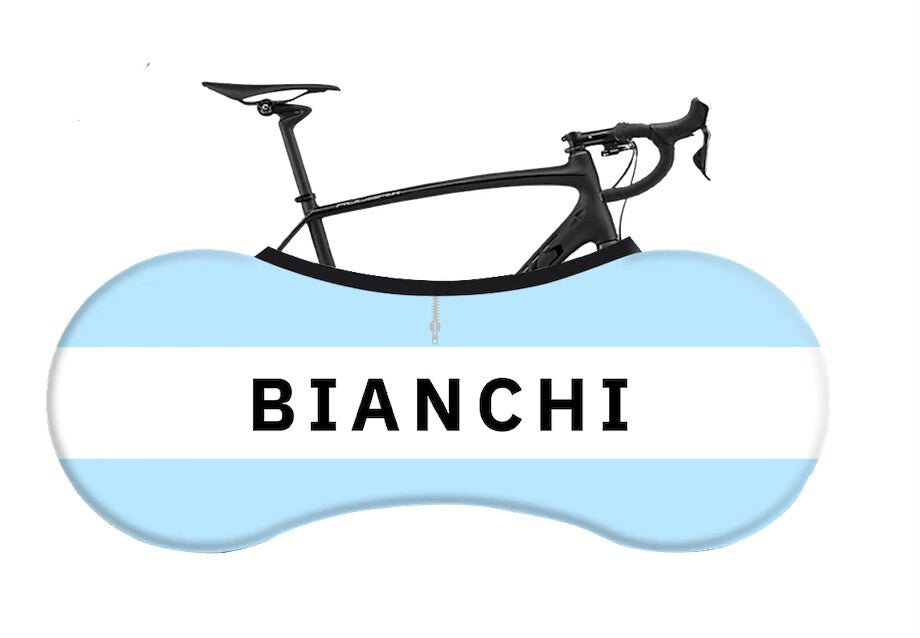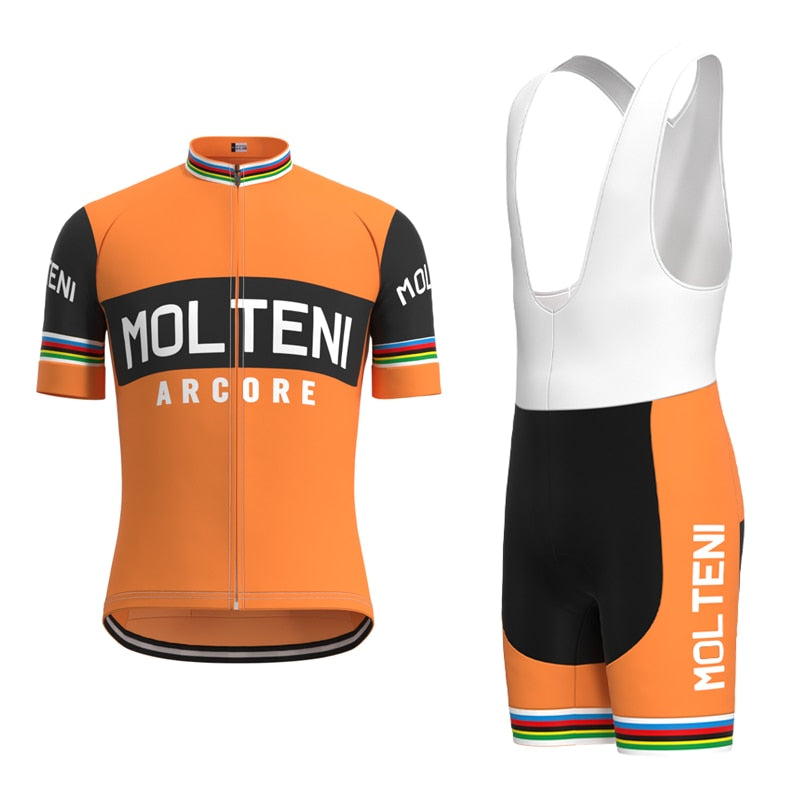
Die Geschichte hinter den Trikots: Geschichten aus Stoff
In der Welt des Radsports sind Trikots mehr als nur Kleidungsstücke. Sie sind Symbole des Stolzes, der Geschichte und des Vermächtnisses. Jedes Trikot erzählt eine Geschichte, oft verwoben mit legendären Radfahrern, ikonischen Rennen und Momenten, die den Sport geprägt haben. Lassen Sie uns in die Geschichten hinter einigen der kultigsten Vintage-Trikots eintauchen: Molteni Arcore, Brooklyn Chewing Gum und Panasonic-Isostar.
Molteni Arcore: Das Trikot einer Legende
Wenn man an das Molteni Arcore Trikot denkt, kommt einem unweigerlich ein Name in den Sinn: Eddy Merckx. Er wird oft als der größte Radsportler aller Zeiten bezeichnet und seine Karriere ist gleichbedeutend mit dem verbrannten Orange des Molteni Arcore Trikots.
Molteni war eine italienische Salamifirma, und Arcore ist die Stadt, in der das Unternehmen seinen Sitz hatte. Das Team, das zwischen 1958 und 1976 aktiv war, wurde zu einem der dominantesten im Profiradsport. Unter dem Molteni-Banner errang Merckx viele seiner bedeutendsten Siege, darunter mehrere Tour de France- und Giro d'Italia-Siege. Das Trikot mit seinem schlichten Design und den kräftigen Farben ist ein Symbol für eine Zeit, in der es im Radsport um rohe Kraft, Kampfgeist und Entschlossenheit ging.
Brooklyn Kaugummi: Der Geist der Klassiker
Das auffällige blau-rote Trikot mit dem unverwechselbaren Brooklyn Chewing Gum-Logo erinnert an die 1970er Jahre, als der Radsport in Europa große Popularität erlangte. Das Team, das von der italienischen Kaugummimarke gesponsert wurde, hatte seinen Sitz eigentlich in Belgien.
Dieses Trikot wird oft mit den harten Männern des Radsports in Verbindung gebracht, die sich bei den zermürbenden klassischen Eintagesrennen hervorgetan haben. Der berühmteste Fahrer, der das Brooklyn-Trikot trug, ist Roger De Vlaeminck, der wegen seiner vier Siege bei dem anspruchsvollen Kopfsteinpflasterrennen als "Mr. Paris-Roubaix" bekannt ist. Das Trikot mit seinen leuchtenden Farben und dem ikonischen Logo verkörpert den Geist einer vergangenen Ära, in der es bei Rennen ebenso sehr um Herz wie um Können ging.
Panasonic-Isostar: Die Anfänge des modernen Radsports
Das Panasonic-Isostar-Trikot mit seinen blauen, weißen und grünen Streifen steht für die Übergangsphase im Profiradsport in den 1980er und frühen 1990er Jahren. Panasonic, ein japanischer Elektronikriese, sponserte das Team, während Isostar, eine Schweizer Sportgetränkemarke, später als Co-Sponsor einstieg.
Dieses Trikot steht symbolisch für eine Zeit, in der der Radsport immer globaler und kommerzieller wurde. Das Team setzte sich aus Fahrern verschiedener Nationalitäten zusammen und war für seinen wissenschaftlichen Ansatz bei Training und Rennen bekannt. Fahrer wie Phil Anderson, der erste Nicht-Europäer, der das Gelbe Trikot bei der Tour de France trug, und Robert Millar, der König der Berge bei der Tour 1984, waren Teil des Panasonic-Erbes. Das Trikot erinnert an eine Zeit, in der sich der Radsport neuen Methoden, Technologien und einem breiteren Publikum öffnete.
Schlussfolgerung
Bei Trikots im Radsport geht es nicht nur um Ästhetik, sondern auch um Geschichten von Triumph, Herzschmerz, Innovation und Entwicklung. Die Trikots von Molteni Arcore, Brooklyn Chewing Gum und Panasonic-Isostar sind nur einige Beispiele für den reichen Teppich, der die Geschichte des Radsports ausmacht. Wenn wir diese Trikots heute tragen oder bewundern, ziehen wir nicht nur ein Kleidungsstück an, sondern nehmen auch die Legenden und Geschichten auf, die mit ihnen verbunden sind.
Teilen


